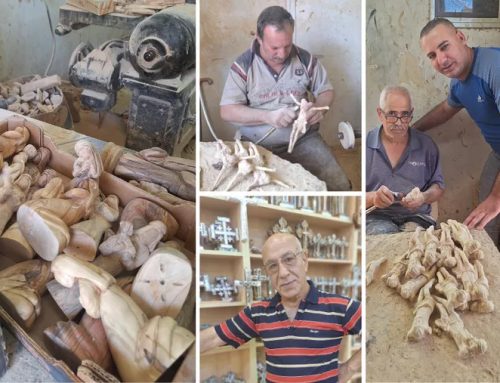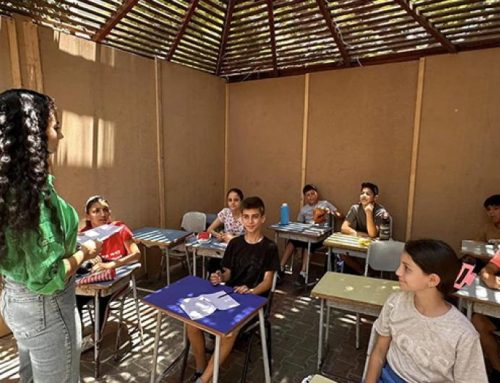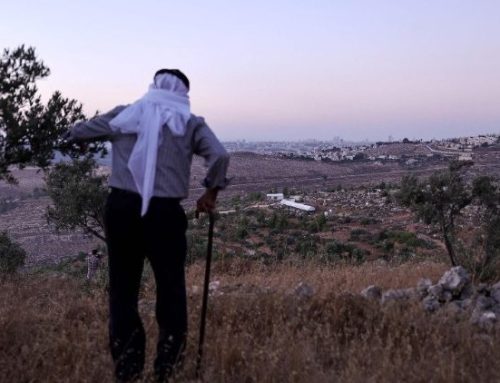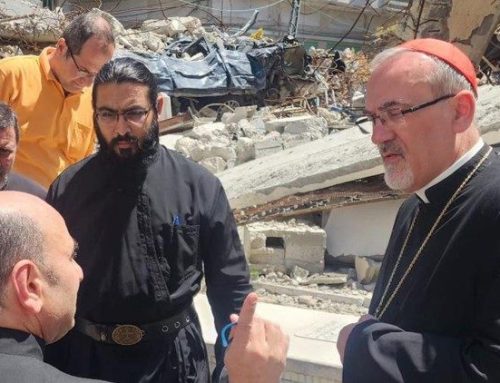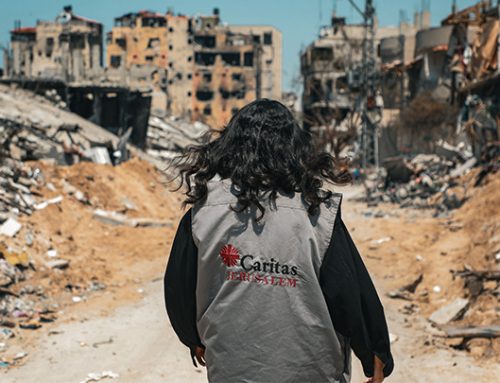The cause of beatification and canonisation of Patriarch Cardinal Gregory Peter XV Agagianian opened in Rome on Ocrober 28,2022. Cardinal De Donatis led the Mass at the Lateran basilica in the presence of the current Armenian Catholic Patriarch Minassian. Agagianian bore witness to the faith through works, and his role in the Second Vatican Council.
The cause for beatification and canonisation of Cardinal Gregory Peter XV Agagianian got underway on Friday, October 28, 2022 in Rome.
For the current Armenian patriarch, His Beatitude Raphaël Bedros XXI Minassian, his predecessor was a “humble and religious” person with a “simple” spirituality who distinguished himself “for the strength of his faith” of which “we are witnesses today on this journey” that will lead him to the honours of the altars.
Hitherto the only cardinal in the Armenian Church, Card Agagianian was a member of the Board of Presidency of the Second Vatican Council, in which he played a leading role. He was twice a papal candidate (1958 and 1963) and passed away in 1971.
The liturgical service that opened the process was led by Cardinal Vicar Angelo De Donatis of Rome, at the Basilica of St John Lateran, in the presence of the current primate.
“We remember with gratitude how he started the construction of schools, places of worship, orphanages and many ecclesial, spiritual and monastic institutions,” said Patriarch Minassian speaking with Abouna.
“Perhaps the most important one was the Order of Saint Mother Teresa”, which, as Saint Paul says, represents a way to see the true faith and bear witness to Christ “through works”.
Born Ghazaros Aghajanian on 18 September 1895 in Akhaltsikhe, Georgia (then in the Russian Empire), the patriarch completed his studies at the Urbaniana in Rome and was ordained a priest on 23 December 1917.
After completing a doctorate, he served for a while as a parish priest in Tbilisi (Georgia). When he returned to Rome, he was appointed assistant rector and then rector of the Pontifical Armenian College.
At the Urbaniana, where he also served as rector, he taught Cosmology and Sacramental Theology; In addition to Armenian, he was fluent in Italian, French, English, Georgian, Russian, Latin, and Greek.
In 1935 he was appointed bishop of Comana, Armenia, and two years later he was elected Catholicos Patriarch of Cilicia by the Synod of Bishops of the Armenian Catholic Church, and confirmed by the pope on 13 December 1937, taking the name of Krikor Bedros (Gregory Peter) XV.
Under his leadership, the Armenian Church was able to regain prestige and importance in the diaspora, after the appalling genocide at the hands of the Ottoman Empire in 1915 during the First World War.
Created cardinal in 1946 by Pius XII, he was appointed in 1955 chairman of the Pontifical Commission for the drafting of the Code of Canons of Oriental Churches, resulting in his resignation from the patriarchate.
In 1960 he became Prefect of the Congregation for the Propagation of the faith (Propaganda Fide), following closely the training of missionaries and liberalising Church policies in developing countries.
During the Second Vatican Council, he played a leading role in drafting Ad Gentes, the Second Vatican Council’s decree on missionary activity, and Gaudium et spes, the Pastoral Constitution on the Church in the Modern World.
On 19 October 1970, he resigned as prefect of the Vatican dicastery and was appointed cardinal bishop of the suburbicarian Diocese of Albano, taking up residence at the Pontifical Armenian College in Rome. He passed away a few months later, on 16 May 1971, after a short illness and was buried in the Armenian church of San Nicola da Tolentino.
The current patriarch, Raphaël Minassian, experienced first-hand some “unnatural” activities, as he calls them. These include: “His body continued to sweat for more than three days after death,” a sign of “something abnormal”.
The prelate goes on to say that, “While we were praying at his bedside in the last moments of life, we suddenly heard him say that he was thirsty, but not for water, but for the ‘holiness of your souls’. So he said.”
He will not be “the first saint of the Armenian Church” which is “full of martyrs and saints” starting with the victims of the genocide, but through his testimony, “he teaches us to stay in this time and give the best example of holiness” immersed in the events “that we live today”.
asianews.it


